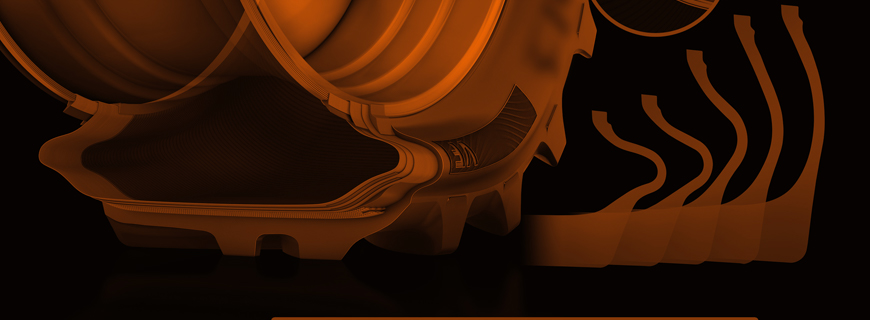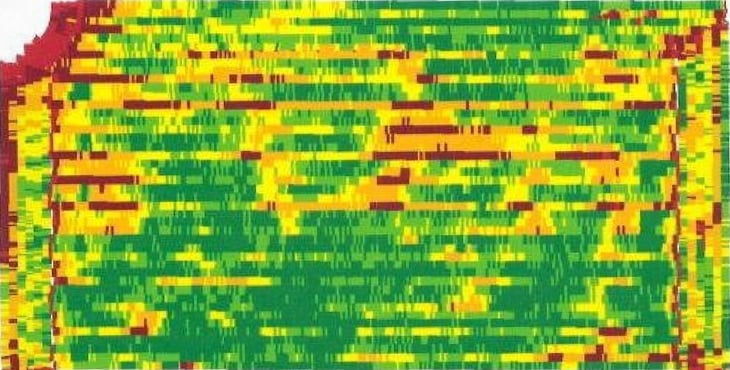
What Are IF and VF Tires and When Should You Use Them?
One evolution in Farm equipment that is here to stay is that machines are getting bigger and heavier—the technology behind the tires that carry and pull that machinery has had to evolve as well. Enter IF and VF tires, a relatively new solution for the higher burdens placed on today’s tractor tires.
There’s a lot that goes into selecting the optimal tire and wheel solution for a given application, and in this article, we will shed some light on how IF and VF tires might factor into that decision.
What Are IF and VF Tires?
IF stands for Increased Flexion, while VF stands for Very High Flexion. Thanks to technological innovation in structure and composition, stemming from unique manufacturing processes, IF and VF tire sidewalls can operate while flexing more.
IF and VF tires are discussed together a lot because they provide similar benefits, just to different extents. Tires with higher flexion can, as the names suggest, withstand more flexion than standard tires. Increased tolerance for flexion means, all else equal, you can either:
- Carry more weight OR
- Reduce the tire pressure
Each option has many benefits depending on your application, and the benefits increase when you move from standard tires to IF tires and finally to VF tires.
IF Ag Tire Capacity and Pressure
IF tires are a step up in flexion from standard ag tires. IF tires can carry 20% more weight at the same air pressure or move the same weight with reduced air pressure.
VF Ag Tire Capacity and Pressure
VF tires provide even more flexion than IF tires. VF ag tires can carry 40% more load than your standard ag tire at the same inflation pressure. Or they can handle the same weight with significantly reduced tire pressure.
|
Standard Tire |
IF Tire |
VF Tire |
|
Baseline Weight |
20% (More Weight or Reduced Pressure) |
40% (More Weight or Reduced Pressure) |
|
Standard Footprint |
Larger Footprint |
Largest Footprint |
|
Little Flotation |
More Flotation |
Most Flotation |
|
Average Compaction |
Lower Compaction |
Lowest Compaction |
|
Low Traction |
Higher Traction |
Most Traction |
Now that you know the differences between standard tires, IF tires, and VF tires, let’s look at the benefits IF and VF tires provide to farmers.
Benefits of VF and IF Tractor Tires
The concepts of improved traction and the capability to carry more weight are both fairly self-explanatory. If your application requires additional attachments or are operating with heavy loads (picture a full sprayer), higher-flexion tires are going to withstand the extra impact and provide better traction and control.
Tire pressure, however, can feel a little more abstract. But there are a lot of ways tire pressure and flexion impact farming. Inflating your tires at the beginning of a season and having a set-it-and-forget approach may leave yield-saving opportunities on the table.
How Decreased Tire Pressure Can Increase Output
When you’re able to decrease the air pressure in a tire—and still carry the same weight—the result is a larger tire footprint. Footprint is a term used to describe the portion of the tire’s tread that touches the ground surface. By being able to withstand more flexion, IF and VF tires can operate at lower air pressure and flex both in length and width, as seen below. That larger footprint may seem like a small detail, but the implications are significant.

More Footprint = More Flotation
With this larger footprint, you increase the tire’s contact area with the ground and improve flotation. Flotation is the tire’s ability to float over loose dirt, which in most farm applications is a must. In addition to keeping farm vehicles above ground, flotation also minimizes soil disturbance in agricultural environments compared to other types of tires that would dig in and damage the soil.
More Flotation = Less Compaction
Because the pressure applied to the soil by that heavy machinery spreads out over a more significant footprint (thereby increasing the flotation), it reduces soil compaction. Soil compaction makes it harder for oxygen and water to reach your crops and makes it harder for your crops to poke through the ground.
Less Compaction = Higher Yields
When focused pressure from your tires compacts the soil, your crops spend more of their energy breaking through, and, in time, compacted soil prevents the plants from growing as tall as they otherwise could. In other words, compacted soil can mean lower yields.
Take the example of Lowell Garrett from Garrett Farms. As soon as he noticed that his corn wasn’t growing well, he reached out to CFI Tire. We’ve been helping him for years, so he knew we’d have a solution to this problem, too.
We advised him to switch to IF tires for the 9630 wheel tractor he uses for planting and the two 9560 RTs he uses for tillage. This allowed him to use a lower tire pressure in the field, increase the tire footprint, and reduce compaction. In numbers, this meant an increase in revenue of over $100,000 in just one year.
Actual yield map before IF tires.

Actual yield map after IF tires.

Briefly put, the main benefits of switching from standard tires to IF or VF tires are:
- Better traction
- Reduced soil compaction
- More flotation
- Better yields
- Fuel efficiency
- Ability to carry more weight
When to Choose IF or VF Tires
IF and VF tires have a lot of benefits in certain conditions, but they’re not equally beneficial for every farmer or application. There are many factors to consider when choosing whether to upgrade to IF or VF tires and whether IF tires or VF tires are most appropriate.
One significant factor that affects IF and VF tire benefits is the soil makeup on your farm. For example, sandy soil doesn’t compact as much as black loamy soil. And while the composition of loamy soil makes it perfect for certain crops, it is also easier to compact, making the benefits IF and VF tires more noticeable. On the other hand, crops planted in sandy soil that doesn’t compact won’t see the same relative yield increases.
Another factor to consider is the slope. On steeper terrains, low-pressure and high-flexion tires can reduce stability of a piece of equipment. In these situations, you may want to opt for standard tires or even a tire with a lower sidewall and less flexion.
Finding the Right Tractor Tires
There’s a lot that goes into determining the ideal tire and wheel solution for each application. If you’re unsure about how flexion applies to your machines, field, and crops and want to discuss the benefits of IF or VF tires, let’s talk.
We have decades of expertise in helping dealers and farmers find the right wheel and tire solutions. One of our experts can talk through your application, any unique factors, and help determine the best option. Just contact us to start the conversation.
